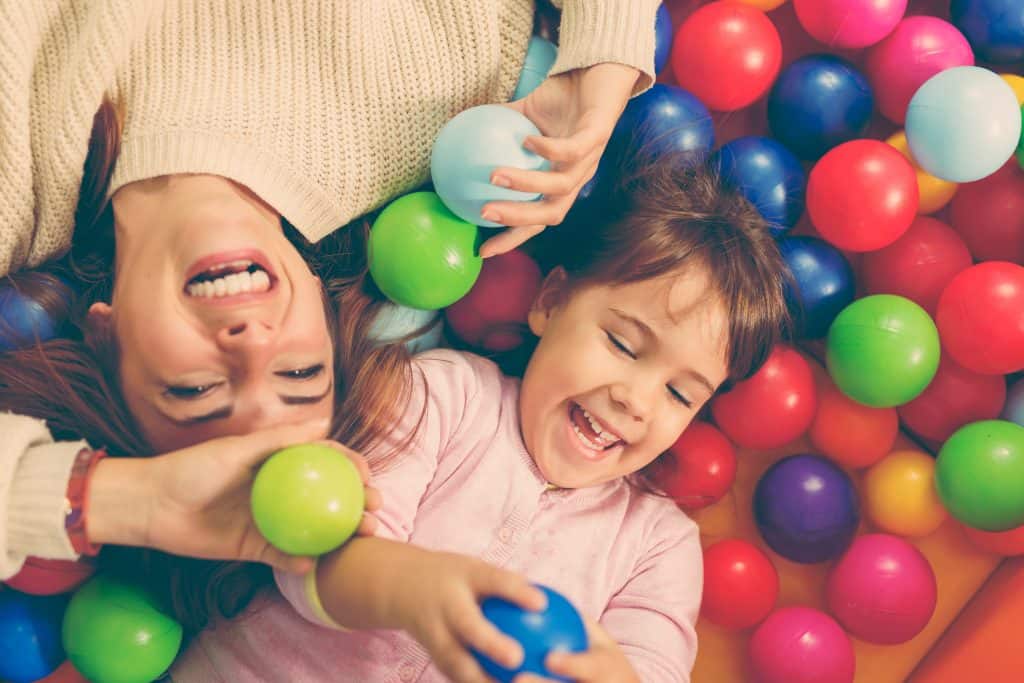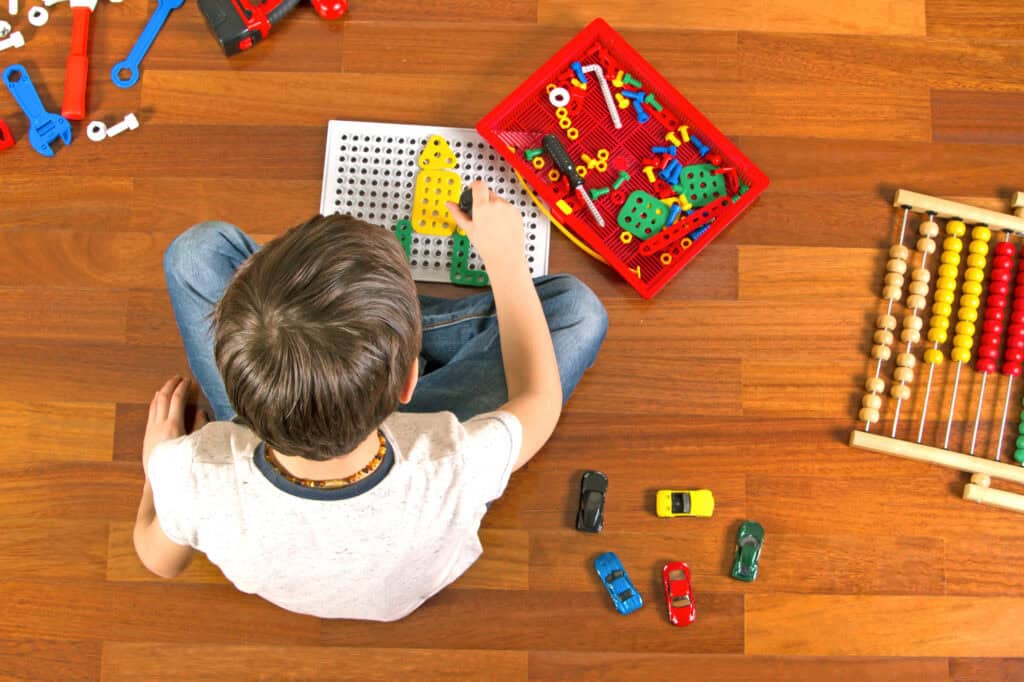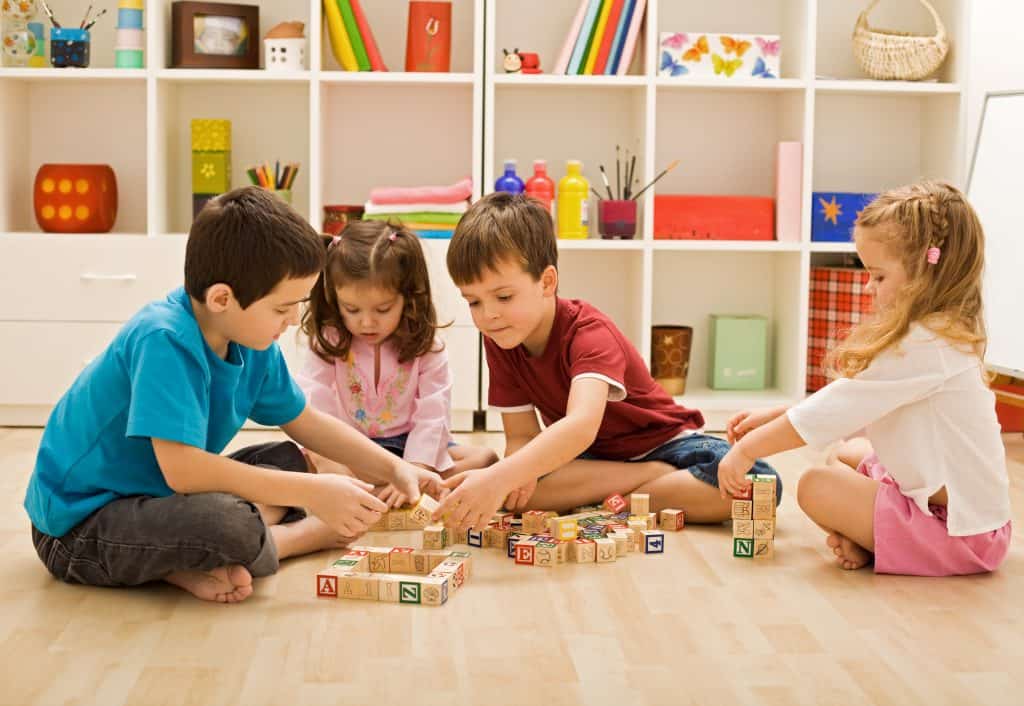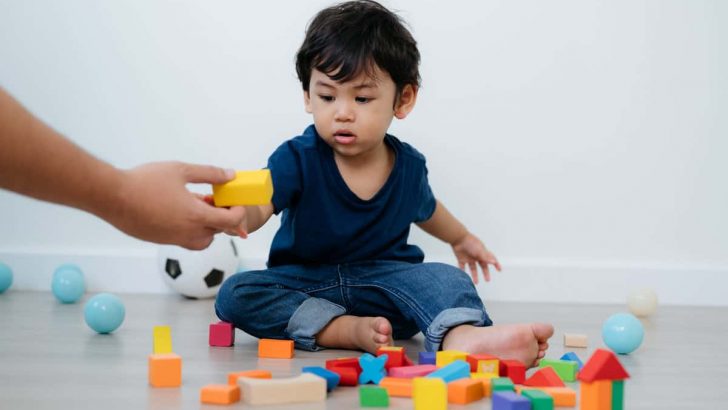Play is an intrinsically motivated activity.
This means that we have the desire to pursue this activity of our own free will.
Most play is spontaneous.
If games are used consciously and deliberately by adults, they are not considered play, but an educational opportunity.
Play takes place in the here and now and is detached from the experience of time.
Have you ever forgotten everything around you while playing a video game?
That’s what it means.
With “real” games, children forget about everyday life and stop paying attention to the time.
A game has positive emotional connotations and is fun.
Play is self-determined.
The child alone decides what and how everything happens.
Why is play so important?

- Existing rules and order are practiced in play, which ensures successful socialization.
- Language, motor and cognitive skills can be practiced.
- Children can slip into different roles and discover the workings of our society in a playful way.
- The opportunity to put themselves in other people’s shoes provides the space to perceive and learn to understand the feelings of others.
- Difficult and stressful subjects can be dealt with playfully.
- Personal wishes and needs, as well as fears, can be expressed.
- Coping strategies and new behaviors can be tried out.
Which games at which age?

Each developmental level has its own typical games.
Developmental psychologists distinguish five forms of play, which generally correspond to stages of development.
Your child will only use some of these forms of play in this phase, while others will continue to be perfected after starting school.
Basically, the forms of play gain in complexity as the child develops.
1. Functional or sensorimotor play

Sensomotor play involves all processes in which stimuli are received through the interaction of sensory organs and muscles.
This includes all activities related to touch, sight, hearing or grasping.
The development of sensorimotor play begins in the womb.
The unborn child hears, touches and gathers impressions of the outside world.
The child’s first play involves exploring and learning about its own body.
Even babies love to move.
At first, movements are still uncontrolled, and are only trained by constant repetition, becoming more and more coordinated (e.g. putting fingers in mouth or grasping).
The child increasingly coordinates sensory functions (seeing, hearing, smelling) with one another.

A bodily sensation emerges.
Once babies have learned to grasp, the objects they play with are selected.
Then, for example, they take to putting the pacifier in the mouth, throwing toys on the floor or shaking the rattle.
Typical actions at this stage are hitting, shaking, pushing, pulling, hitting or throwing.
Your child will learn through play that there are different surfaces, shapes, weights and colors.
It trains so-called hand-eye coordination, the ability to process visual stimuli and to move accordingly.
Auditory perception is also practiced at this stage of development.
The child understands, for example, which direction the sound of a rattle comes from.
Functional play continues to evolve with age.
2. Construction play

Construction play is the second form of play a child learns.
It builds on functional play.
Now, the object is no longer in the foreground.
Towards the end of the second year of life, your child realizes that his or her actions can make a difference.
A finished product is in the making.
Based on sensory-motor exercises, your child will be able to produce something.
A goal is set and achieved through his or her own actions (e.g. “I’m building a castle”).
Your child learns to organize and plan his or her actions (“What do I need to build a castle?”).
Motor skills are also needed to implement the planned construction idea.

Of course, it also happens from time to time that not everything that was planned can be implemented exactly.
This is an excellent opportunity to learn how to deal with failure and practice frustration tolerance.
Initially, the building game was to be played without rules.
Older children (from around age 4) can implement the construction instructions already provided, create plug-in diagrams, implement simple folding instructions or create figures from pictures.
3. The reception set

Reception play includes passive forms of play.
This includes looking at picture books or exhibitions, watching theater, cinema or television, and listening to stories, music or songs.
With new information, your child expands his or her knowledge, which now serves as a guide.
Identification with the actors shapes their perception of themselves and the world.
At the same time, these types of games serve to regulate tension.
Many children can relax better when they read and discuss picture books, and become calmer.
Reading bedtime stories is also considered to be a reception game.
The prerequisites for this form of play are perseverance and the ability to concentrate, because if a child can’t sit still, he or she won’t be able to absorb/process the information.
4. Symbol play

Symbol play begins at around 2 years and 6 months.
Characteristic of this form of play is that fictitious actions, i.e. “pretend actions”, can be observed.
For example, your child gives his doll a drink.
The child no longer thinks only of himself, but also of the needs of others (in this case, the doll’s need to drink), and thus develops empathy.
The prerequisite for symbol play is object constancy, the ability to remember an object even when it is no longer visible.
Through symbolic thinking, the child learns to replace the original object, including typical behaviors, with a symbolic object.
In our case, a real baby is replaced by the doll.
The doll adopts the typical behavior of a baby.
Role-playing often depends on other players.

It’s also a great way of acquiring language and social skills.
It’s important to communicate with others, to compromise and find solutions.
The more a child can express himself verbally, the greater the social significance of role-playing.
If you notice that your child barely plays with others (for example, mother-father-child), this can sometimes indicate that language skills may need support.
Role-playing can have a real or fictional background.
Traumatic or stressful events are dealt with in a child-friendly way, including through role-playing.
For example, parental divorce or the death of a loved one can be dealt with in this way.
Ideally, throughout life, we should maintain this playful way of slipping into new roles and looking at facts from a different angle.
Adults can also use the “pretend” strategy to better understand others or to find new ways.
5. Playing by the rules

Rules-based games require a high level of cognitive development.
In fact, your child needs to have an understanding of the rules and a willingness to follow them.
Children as young as 2.5 can play the first simple rules games.
Depending on the game, certain cognitive, linguistic, social, fine motor or emotional skills are also required.
Preschoolers need to have mastered the handling of rules games.
Such mind games require a certain cognitive elasticity and mental flexibility.
As soon as your children have mastered cognitive combinations, they will develop their first strategies.
As a general rule, children must first learn to cope with the feeling of losing (frustration tolerance).
Over time, children experience an increase in self-esteem.
6. Movement play

Clearly, active play is great fun for most children.
They enjoy moving, feeling their own bodies and the interplay of motor skills and thinking.
The aim of movement play is to coordinate sensory organs, improve body awareness and develop self-control.
The first movement games already take place in functional play.
Children learn to manage their own bodies: they practice keeping their balance, learn the strength required for certain actions, discover what they can do with their bodies.
As they get older, movement games can be extended ad infinitum.
Children who have difficulty playing benefit particularly from this: hyperactivity, immensity or anxiety.
Children are more motivated, because they have a lot of fun and can more easily work on their difficulties.
Anxious children, for example, are more daring.
Moreover, children who dislike limits are more willing to follow rules.
Even children with perceptual difficulties (clumsiness, balance difficulties, visual perception) can improve their game and have fun doing it.

